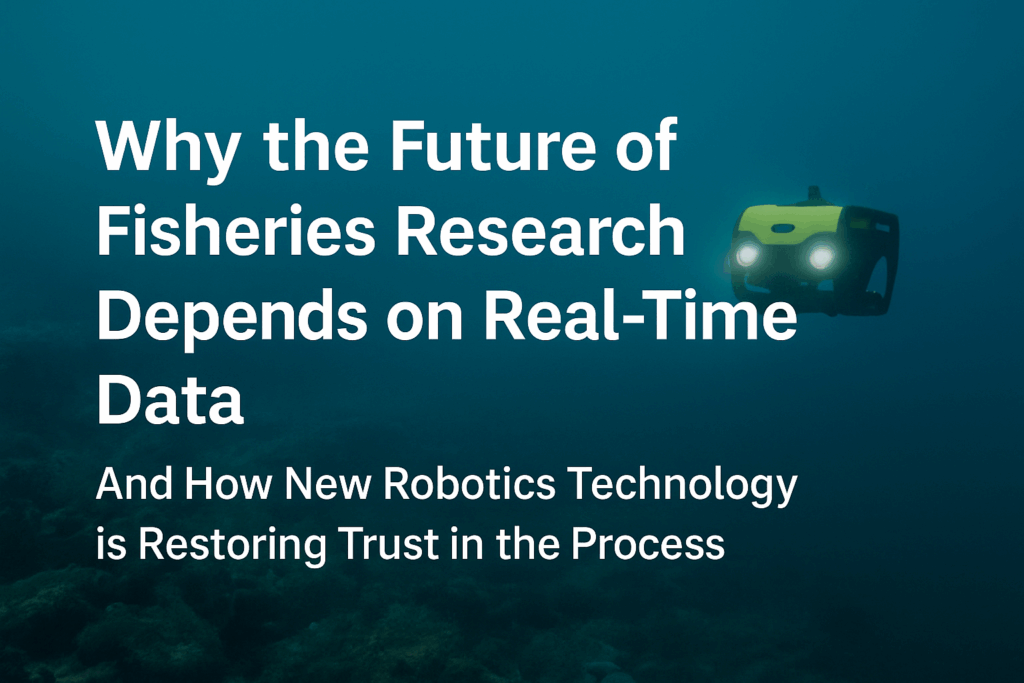Why the Future of Fisheries Research Depends on Real-Time Data
How New Robotics Technology Can Restore Trust in Fisheries Management
In the world of fisheries management, data isn’t just helpful — it’s everything.
It drives policy, sets quotas, and impacts livelihoods up and down our coastlines. But here’s the truth many insiders already know: we’re making decisions with incomplete, outdated, and often inconsistent data.
That’s not just a problem.
It’s a threat to the future of commercial and recreational fishing alike.
If we’re going to protect the resource and the people who depend on it, we need better tools — and we need them now.
The Problem: We’re Flying Blind
Right now, much of the data used in fisheries science comes from slow-moving surveys, long-interval reports, and limited observation tools. By the time the data is collected, analyzed, and published, it’s already outdated. Fish stocks move. Ocean conditions shift. Human activity fluctuates. Yet policies remain locked in by lagging information.
This gap in real-time insight leads to two major issues:
- Mistrust – Fishermen and fishing communities question the accuracy of the data that affects their livelihoods.
- Mismanagement – Well-intentioned regulators are forced to make decisions without the full picture, often erring on the side of restriction rather than balance.
That’s where robotics and real-time underwater observation come in.
The Solution: Eyes Underwater, In Real Time
Companies like Blueye Robotics are changing the game. Their robust, professional-grade underwater drones give scientists, regulators, and operators a way to see what’s happening beneath the surface — right now.
Whether it’s:
- Monitoring reef health
- Verifying stock biomass
- Surveying artificial structures
- Or documenting species migration
…these drones deliver live-streamed, high-resolution video in environments where traditional survey vessels or divers fall short.
Suddenly, we’re not guessing. We’re observing.
And that changes everything.
The Missing Link: Deployment and Integration
Of course, having the technology is only half the battle.
The other half is getting it into the hands of the people who need it — and training them to use it effectively.
That’s where RobotLAB Cape Canaveral comes in.
Our team works directly with Blueye and other marine robotics providers to deploy, integrate, and support these underwater systems for fisheries agencies, universities, and private-sector operators. We understand both the technology and the operational reality of working on the water.
We don’t just sell equipment — we provide turnkey solutions with training, maintenance, and support included.
Why This Matters
The future of fisheries management depends on trust — and trust depends on transparency.
Imagine a future where:
- Quota decisions are based on current conditions, not outdated estimates
- Reef and habitat surveys are conducted monthly, not annually
- Commercial operators can provide real-time observations to supplement research
- Stakeholders from scientists to fishermen to policymakers are working from the same live feed
That future is not 10 years away.
It’s available now — and the companies who act first will lead the way in credibility, efficiency, and results.
Final Thought: The Fish Deserve Better. So Do We.
We have the tools to replace guesswork with visibility. To replace friction with collaboration. And to bring real, observable truth to the complex world of fisheries research.
If you’re a researcher, regulator, or operator who’s ready to take the next step, RobotLAB Cape Canaveral is here to help.
📞 Contact us for a no-pressure consultation and learn how real-time underwater robotics can support your mission — and renew trust in the process.
